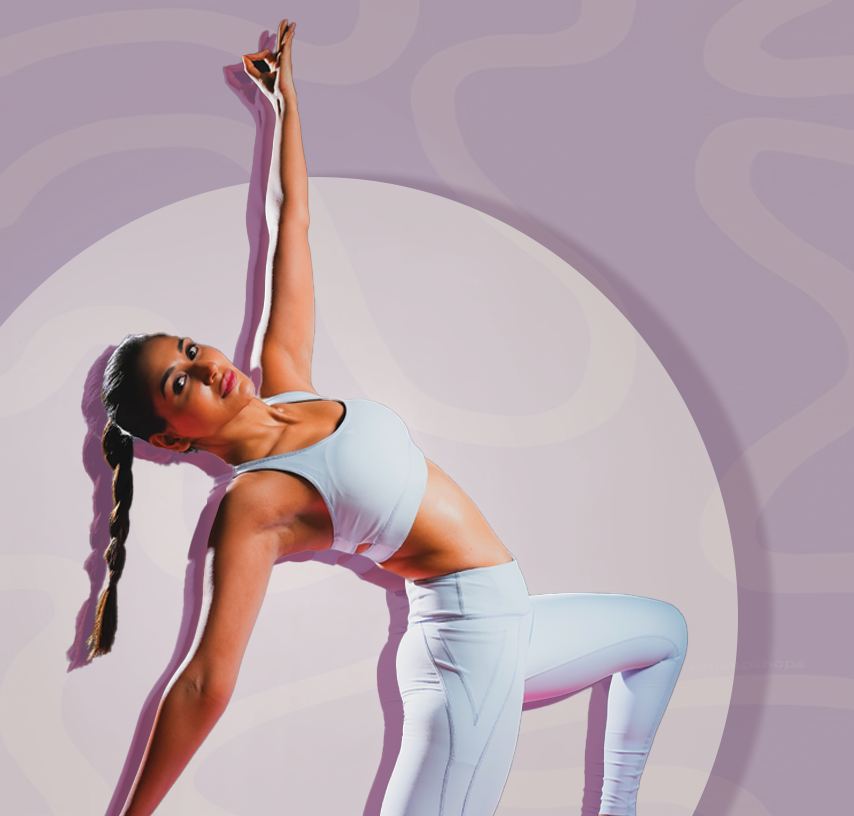pilates is a type of exercise that involves controlled movements, breath control, and body alignment. it was developed in the early 20th century by joseph pilates, who believed that physical and mental health were closely linked. pilates exercises can be done by almost anyone, regardless of age, fitness level, or body type. you can do them at home or at the gym meaning they are extremely customizable and easy to incorporate into your workout routine.
the beauty of pilates is that it can be adapted to suit the needs and abilities of each individual, making it a safe and effective form of exercise for almost everyone. pilates exercises aim to improve flexibility, strength, and endurance while also promoting relaxation and stress relief.
what are pilates exercises?
first things first, pilates meaning in english is a form of exercise that involves movements in control while aligning your body and controlling your breath. one of the key principles of pilates is the use of breath control to help coordinate movements and improve concentration. you must be knowing pilates meaning in hindi or in your regional language without realizing what it actually means.
the next time you head to your pilates class meaning and practice of the exercise should be clear to you. the exercises are performed slowly and with precision, with a focus on proper alignment and form. pilates exercises are designed to be low-impact and can be modified to suit people of all ages and fitness levels.
pilates workouts can be performed on a mat or using specialized equipment, such as a reformer or cadillac. the exercises focus on strengthening the core muscles of the body, including the abdominals, lower back, and pelvic floor. the core muscles are responsible for providing stability and support to the spine and pelvis, which is important for maintaining good posture and preventing injuries.
some examples of pilates exercises include:
- the hundred: this exercise involves lying on your back with your legs in a tabletop position and pumping your arms up and down while breathing deeply.
- the roll-up: this exercise involves lying on your back and slowly rolling up to a seated position, engaging your core muscles throughout the movement.
- the plank: this exercise involves holding a push-up position with your arms straight and your core engaged.
- the single leg circle: this exercise involves lying on your back and moving one leg in a circular motion while keeping the other leg still and your core engaged.
- the teaser: this exercise involves sitting on the mat with your legs extended and your arms reaching forward, then slowly rolling back onto your spine while lifting your legs and arms off the mat.
pilates exercises can be a great way to improve overall fitness and well-being. they can help improve flexibility, strength, and endurance while also promoting relaxation and stress relief. if you're interested in trying pilates, it's important to work with a qualified instructor who can help guide you through the movements and ensure proper form and alignment.
who can do pilates exercises?
whether you're a seasoned athlete looking to improve your performance, someone recovering from an injury or surgery, or just someone looking to improve your overall health and fitness, pilates can be a great option.
it's important to note, however, that if you have a medical condition or injury, it's always best to consult with your healthcare provider before starting any new exercise program, including pilates.
who should avoid pilates workouts?
while pilates exercises are generally safe for most people, there are some individuals who may need to avoid or modify certain movements. here are some examples of people who should exercise caution when doing pilates or avoid certain movements altogether:
-
pregnant women: while pilates can be a great way to maintain fitness during pregnancy, it's important to avoid certain movements that can put too much strain on the abdominal muscles or cause discomfort. pregnant women should work with a qualified instructor who can guide them through safe modifications and appropriate exercises.
-
people with certain medical conditions: pilates can be a great form of exercise for many people with chronic conditions, such as back pain, arthritis, or osteoporosis. however, certain movements may need to be modified or avoided altogether, depending on the individual's condition. people with medical conditions should consult with their healthcare provider before starting any new exercise program, including pilates.
-
people with injuries: while pilates can be a great way to rehabilitate injuries and improve mobility, it's important to avoid movements that may exacerbate the injury or cause pain. people with injuries should work with a qualified instructor who can guide them through safe modifications and appropriate exercises.
-
people with certain physical limitations: pilates can be modified to suit people of all ages and fitness levels, but there may be certain movements that are not appropriate for individuals with certain physical limitations, such as mobility issues or balance problems. in these cases, it's important to work with a qualified instructor who can help modify the exercises to suit the individual's needs.
in general, pilates can be a safe and effective form of exercise for most people, but it's important to exercise caution and avoid movements that may cause discomfort or exacerbate existing conditions. if you have any concerns about whether pilates is right for you, be sure to consult with a qualified instructor or healthcare provider before starting any new exercise program.
pilates workout yoga procedure
here is a general overview of the pilates workout procedure:
-
warm-up: the pilates workout typically begins with a warm-up session to prepare the body for the exercises to come. this may include breathing exercises, stretches, or gentle movements to get the blood flowing and loosen up the muscles.
-
core exercises: the core muscles are the focus of the pilates workout, and many exercises are designed to strengthen the abdominals, lower back, and pelvic floor. these exercises may be done on a mat or with specialized equipment, such as a reformer or cadillac.
-
full-body exercises: in addition to core exercises, pilates also includes exercises that work the arms, legs and other parts of the body. these exercises may involve resistance bands, weights, or other equipment, or they may be done using just the body's own weight for resistance.
-
cool-down: the pilates workout concludes with a cool-down session to stretch and relax the muscles. this may include gentle movements, stretches, or breathing exercises to help calm the body and reduce stress.
throughout the pilates workout, emphasis is placed on proper form and technique, with a focus on controlled movements and mindful breathing. the goal is to improve strength, flexibility, and balance while also promoting relaxation and reducing stress.
pilates benefits
when starting a pilates practice, it's important to begin at a level that is appropriate for your fitness level and experience. starting with beginner exercises can help you build a solid foundation of strength and control, while intermediate and advanced exercises can help you challenge yourself and improve your overall fitness.
here are some of the key benefits of pilates:
-
improved core strength: pilates exercises focus on strengthening the core muscles of the body, including the abdominals, lower back, and pelvic floor. this can improve posture, stability, and balance, and help prevent injuries.
-
increased flexibility: pilates exercises involve gentle stretching and lengthening of the muscles, which can improve flexibility and range of motion.
-
better balance and coordination: pilates exercises require precise movements and control, which can improve balance, coordination, and overall body awareness.
-
reduced stress and anxiety: pilates involves deep breathing and mindfulness, which can help reduce stress and promote relaxation.
-
improved posture: by strengthening the muscles that support the spine and improving body awareness, pilates can help improve posture and reduce back pain.
-
increased muscular endurance: pilates exercises are designed to be low-impact and can be done for extended periods of time, which can improve muscular endurance and stamina. you can say that pilates meaning is to give your body that much-needed boost and strength that it deserves.
-
better overall fitness: gym pilates is a full-body workout that can improve cardiovascular health, build strength, and promote overall fitness and well-being.
whether you're looking to improve your physical fitness, reduce stress, or simply feel better in your own body, pilates can help you achieve your goals and improve your overall quality of life. for a better pilates workout experience, you must invest in some premium quality yoga wear.
keeping this in mind, aastey brings you a great range of yoga and workout apparel that consists of sports bras, joggers, stretchable yoga pants and a lot more. check out their collection right now to take your pilates workout regime to the next level. these clothes will make heading to your pilates class a lot more fun and exercising a lot more comfortable and stylish for sure!
level of difficulty
the level of difficulty for pilates exercises typically depends on a few key factors, including the complexity of the movements, the use of specialized equipment, and the intensity of the workout. here is a breakdown of the different levels of difficulty for pilates:
-
beginner level: pilates for beginners can be daunting if not done the right way. beginner pilates exercises are generally simple and low-impact, focusing on basic movements and breathing techniques. these exercises may be done on a mat or with minimal equipment, and are designed to help build strength, flexibility, and body awareness.
-
intermediate level: intermediate pilates exercises build on the foundations of the beginner level, incorporating more complex movements and sequences. these exercises may involve the use of equipment such as resistance bands, balls, or a pilates reformer, and may require more concentration and control than beginner exercises.
-
advanced level: advanced pilates exercises are the most challenging and intense, requiring a high level of strength, flexibility, and control. these exercises may involve complex sequences and movements that require a great deal of focus and precision and may use advanced equipment such as a pilates cadillac or chair.
regardless of your level of experience, it's always important to approach pilates exercises with caution and to listen to your body. if you experience pain or discomfort during a workout, it's important to stop and consult with a qualified pilates instructor or healthcare provider. by starting at an appropriate level and gradually progressing as your fitness improves, you can enjoy the many benefits of pilates while minimizing the risk of injury.
easy modification for beginners
for beginners, pilates exercises can be challenging and may require modifications to help build strength and avoid injury. here are some easy modifications for beginners of pilates:
-
start with the basics: when starting pilates, it's important to focus on the basic movements and exercises before progressing to more advanced routines. this can help build a solid foundation of strength, control, and body awareness.
-
use props: props such as blocks, straps, and resistance bands can be used to help modify pilates exercises and make them more accessible for beginners. for example, using a block to support the head during a pilates roll-up can help reduce strain on the neck and make the exercise more manageable.
-
take breaks: it's important to take breaks as needed during pilates exercises, especially when starting out. pausing to rest and catch your breath can help prevent fatigue and reduce the risk of injury.
-
focus on form: proper form is essential to the effectiveness and safety of pilates exercises. beginners should focus on maintaining proper form and alignment throughout each exercise, even if it means reducing the range of motion or intensity of the movement.
-
listen to your body: it's important to listen to your body and avoid pushing beyond your limits. pilates should feel challenging, but not painful. if you experience pain or discomfort during an exercise, it's important to modify or stop the exercise and consult with a qualified pilates instructor or healthcare provider.
by using these easy modifications, beginners of pilates can build strength, improve flexibility, and develop body awareness while reducing the risk of injury. as you become more comfortable with the basic movements, you can gradually progress to more advanced routines and continue to reap the many benefits of pilates.

































